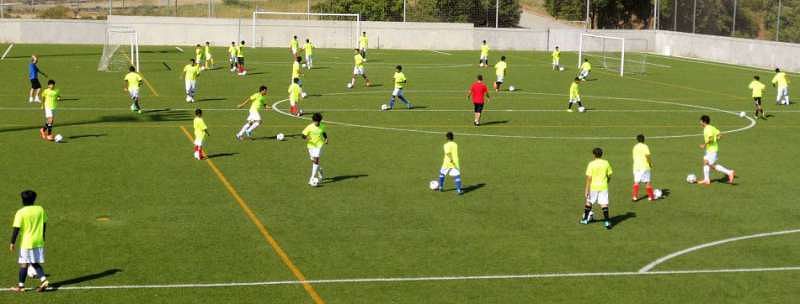
Are soccer schools in India gaining steam?
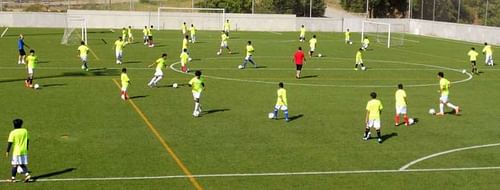
The sports scenario in India is changing with every passing year. With the turn of the century, there have been plenty of new leagues formed within the country which the audiences have been exposed to. The Premier Badminton League (PBL), Pro Kabaddi League (PKL), Pro Wrestling League, and Indian Super League (ISL) have all carved places of their own in today’s sports scenario.
The Indian Super League has managed to do well over the course of three seasons, however, it still has a long way to go in terms of producing top talent for Indian Football and raising the level of the game itself in India. The ISL though has opened the door for many foreign clubs to setup their base in India.
Atletico Madrid have made their presence felt through Atletico de Kolkata, Italian club Fiorentina through Pune City FC and Feyenoord had a tie up with Delhi Dynamos which lasted a year. On the other hand, clubs have also set up football schools and academies in India. Some of the famous European clubs to have setup football schools have been Arsenal, Barcelona, Paris St. Germain and Liverpool. Although Manchester United had an academy in India for some time, it did not last long.
Let us look at what has really made these European clubs set up their schools and academies in India.
Asia stands second in terms of Premier League viewership, after Europe, which is quite surprising considering the fact that Africa, South America and North America have greater representation in the Premier League as compared to Asia. India has its own decent share of English Premier League viewers as compared to other Asian countries Japan, South Korea, Malaysia etc.
The I-League, India’s professional football league, has only 10 teams that compete for the title. The lack of top quality football among the I-League teams has resulted in avid football fans rooting for European clubs, leading to the development of a strong fan base for these clubs in India. On hindsight, it appears that European clubs are trying to capitalize on this fan base and expand the same by setting up academies in the country.
India’s reputed football journalist, Mr. Novy Kapadia says, “It is a vacuum these academies are filling. The local association do not work in India. So, the vacuum has been filled by these foreign clubs. There is no guidance for football in the whole country. In this vacuum, the foreign clubs are operating. They have capitalized on this as there is a market.
“Manchester United have more stores here probably than anywhere else in the world. So, they are capitalizing on this boom.”
The European clubs have catered to the European market for quite a long time now, which is slowly stagnating. They have found newer, untapped markets in terms of Asian countries, where there is still a huge demand.
Indian football currently has bigger problems in terms of training facilities, infrastructure, number of stadiums and number of clubs. The European academies are targeting training students, however, the students do not have local clubs and smaller regional leagues to gain playing time. Also, the overall number of professional players produced is quite less which has resulted in reduced competition for the senior players in the team.
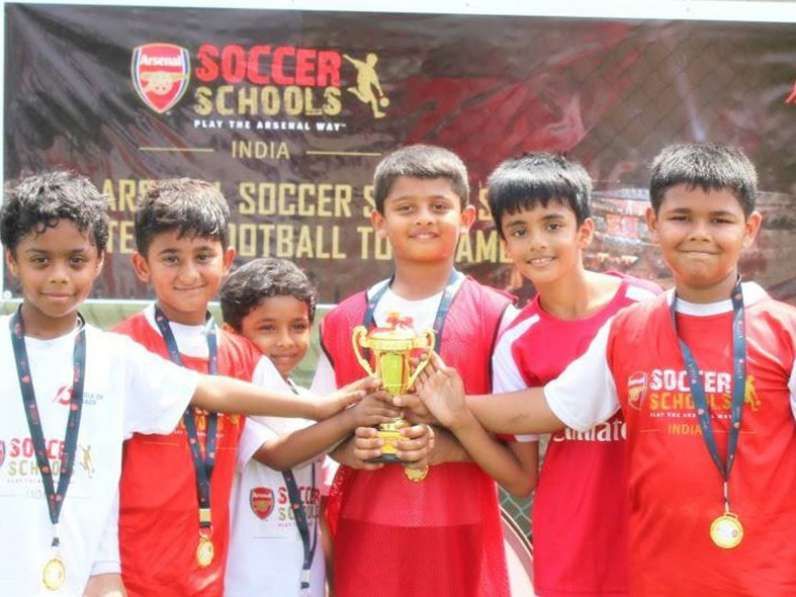
Mr. Kapadia also points out, “Academy is only the cream of the talent. If your milk supply is not there, there is no cream. School grounds are not available, public parks are diminishing. That is where people should actually put their money. Build stadiums with a capacity of 20,000-30,000. There should be proper infrastructure to play.”
However, on the flip side, the European academies and soccer schools are trying to reach out to as many people as possible and trying to create an awareness among people. The clubs are targeting the grassroots to change the entire atmosphere and bring in discipline to the football ecosystem.
They are also getting the technical know-how into the country through foreign coaches and dieticians. They are not only training the students but also the coaches in order to acquaint them with higher levels of training and football.
On that note, we analyse what different soccer schools are doing in certain key areas given below. The writer interviewed Mr. Dhruv Arora, Head of FCBEscola NCR Region, Mr. Neel Shah – CEO DSK Shivajians FC & Liverpool International Football Academy – DSK Shivajians and Mr. Rajesh Mehrotra – Co-Founder and Director of Sports Roots. We look at how these soccer schools differ in certain areas.
#1 What do the students gain?
At the FCBEscola, the students have been divided into various categories and trained according to their skill level. They have a Catalan who is stationed in India to monitor the progress of the kids undergoing training. They have an entirely new diet for the kids right from the age of 4-5.
These are certain things that were missing from the Indian football scenario. Some of the students who perform well are also sent to Europe for short stints to undergo advanced training. However, there are question marks over the effectiveness of these short stints as well. Usually, the students take 2-3 weeks to get acclimatised and accustomed to the country, following which they will have to undergo rigorous training which might be completely new to them.
At the PSG Soccer School, they believe that it is important to first have the infrastructure, then the coaches and finally the technical part, where coaches need to ensure that the kid is developing his technical skills, his motor skills along with his stamina, his integrity and intensity. So, they give detailed examples and detailed training to the kids to ensure that the training process is successful. The stress is on ensuring that the kids have fun while playing and also improve their technical skills at the same time.
However, at DSK Shivajians, they follow a regimen which is followed by Liverpool and only the coaches are aware of the different activities that happen during these training sessions.
#2 What is being done to overcome the lack of playing time?
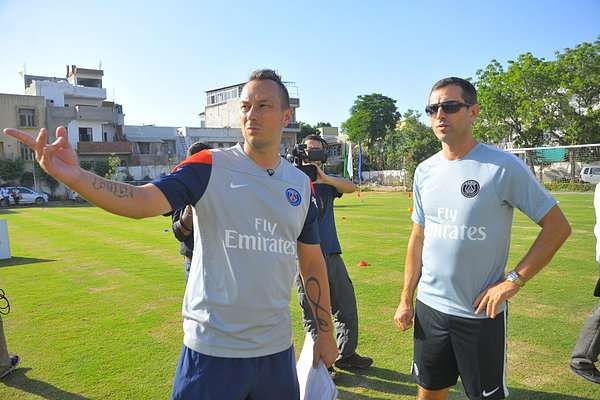
At Sports Roots, the PSG Soccer School, the focus is currently on the 4-16 age group and not above. The academy currently does not have the bandwidth to focus on that and they believe there is enough work to be done at the grassroots level, as they want kids to come out and play football.
“The Reliance Youth Foundation has done a commendable job in creating one of the largest leagues in the country. As we go along, we will have enough opportunities for the kids who are coming out of our academies, but our focus remains kids in age group of 4-16,” said Mr. Rakesh Mehrotra.
Mr. Neel Shah says, “It’s an Indian football challenge for sure. Thankfully the I-League is there and we have professional teams playing there. We have U18 and U16 I-League teams. Our U16s and our U18s are pretty much covered. Currently, we are facing challenges for the U13 team, but there is a possibility of U13 I-League being started. But until then, we as an organization, are not going to go ahead in creating too many competitions as such. It is quite a financial burden and a logistical one as well.”
As compared to the FCBEscola and the Sports Roots Academy, DSK Shivajians function differently in this regard since they are not just an academy but also have a football club of their own. By competing in the different levels of I-League, players from their academy do get a chance to play for the DSK Shivajians club. However, the issue is being faced by academies who do not have their own professional club and are majorly training kids in the age group of 6-14.
#3 Procedure to select students for the academy
The selection process for FCBEscola starts with a trial. Trials are conducted based on which category the students are put into – either into the beginner’s programme or an advanced programme. The beginner’s programme is called a formative programme and the advanced programme is called Escola programme.
On the other hand, Sports Roots are more of a grassroots level sports academy. They are not a talent led academy which means that they will not just take students with certain talent and then groom them further. The core belief is that sport should be accessible to all especially at the grassroots level and that all kids should get an opportunity to play.
The programme is for 4-16-year-old kids. As long as a kid is healthy and has a healthy appetite to play, they are more than welcome to join the academy.
However, the scenario is different at DSK Shivajians. When questioned about the selection process, Mr. Neel Shah proudly mentioned, “We started the programme back in 2014 where we started with scouting. Our two coaches from Liverpool went to Aizwal, Shillong, Delhi, Goa, Mumbai and we got something here in Pune. That’s how we found the first 64 players, our U16 and U18 players who joined our academy.
“Now, we host open trial ever year during April- May. We watch a lot of I-League U16 and U18 matches and identify which players we want to work with as well. In the beginning, we started like a professional tour, now it’s become the largest proper academy.
#4 How is the infrastructure being built and managed?
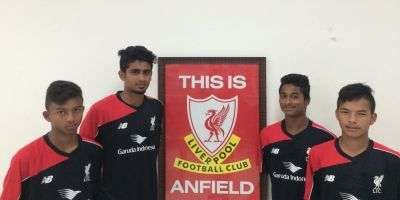
As for the infrastructure, DSK Shivajians do not get much help from Liverpool. Luckily, for the football club, the DSK group are builders. They have construction as their core area and they also run an educational institute called the DSK International Campus. This has helped DSK Shivajians share the campus with the design school.
So, the students have accommodation, a gym, a swimming pool, and a canteen. Neel Shah adds, “I think for a lot of people, one of the reasons why they don’t start a residential academy is the cost. Because, the building maintenance, the accommodation, the gym, pool and everything else in addition to the ground is not cheap. Thankfully, a conglomerate like DSK group has access and we have that support that we can just come in and utilize what’s already there.”
As for the other soccer schools, they operate on an asset light model. The objective is to associate with schools who can share their vision for sports and also strongly believe that sport is an integral part of kids’ co-curricular activities. In this case, the infrastructure is managed by the school with whom the soccer academies enter into a tie-up. This ideally means that the academies will only have to bring in the best curriculum in the world, the best people and the best programme.
#5 Would the schools benefit from Government assistance?
As of now, none of the soccer schools are receiving any assistance from the Government. However, support from the Government would definitely be appreciated. Neel Shah, who has earlier worked with the Major League Soccer in the USA has his take on the Government offering support, “Any entity investing in football would help us, especially financial support would be ideal.”
However, according to Rakesh Mehrotra, “We believe, as a sports management company, we need to run sustainable programmes for them to be successful in the long run. Anything which depends on grants from the Government is not going to be successful and sustainable over a long time. The government spends a lot of money, it just needs to ensure money goes in the right direction.”
The Final Word
Dhruv Arora had his take on foreign clubs setting up soccer schools in India, saying, “In India, 5 years ago there was a distinct lack of quality in everything. There was no infrastructure, people were playing on maidans. We are trying to provide a platform for the people. For example, in any sport, if you want to raise the level of a country, you give them the best facilities available. Now, our players can play at a level at which a 4-year-old European would be playing. So, hopefully in the future, it will start bearing fruit.”
The soccer schools have made their intentions about focusing on spreading the game currently quite clear. Although the model has not yielded significant success currently, it might very well be one for the future. As it stands, the efforts have led to more people becoming aware of the soccer schools and the European clubs as such. The popularity and credibility are what the clubs can capitalize on in this hugely untapped Indian market, to spread the beautiful game of football.